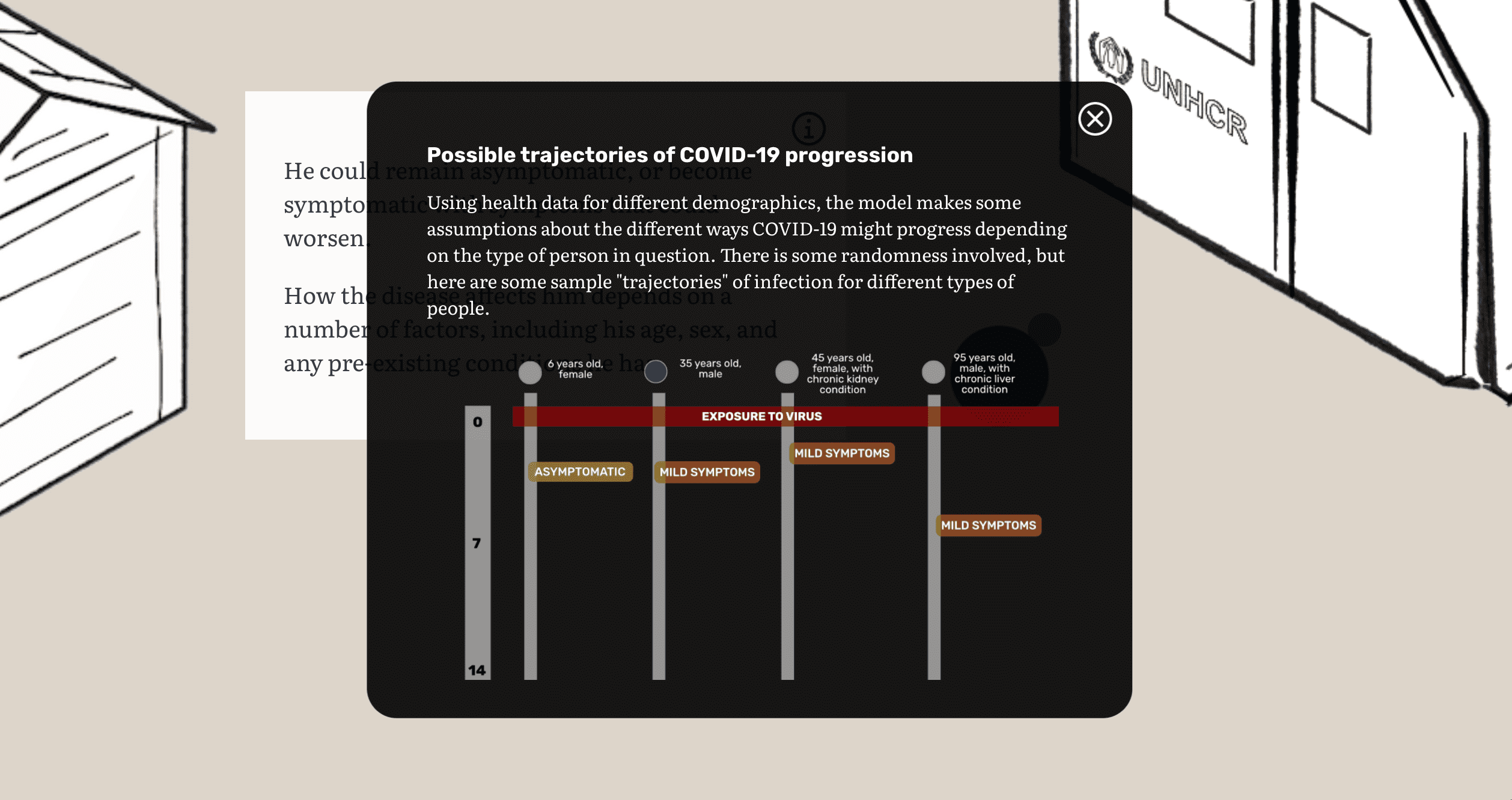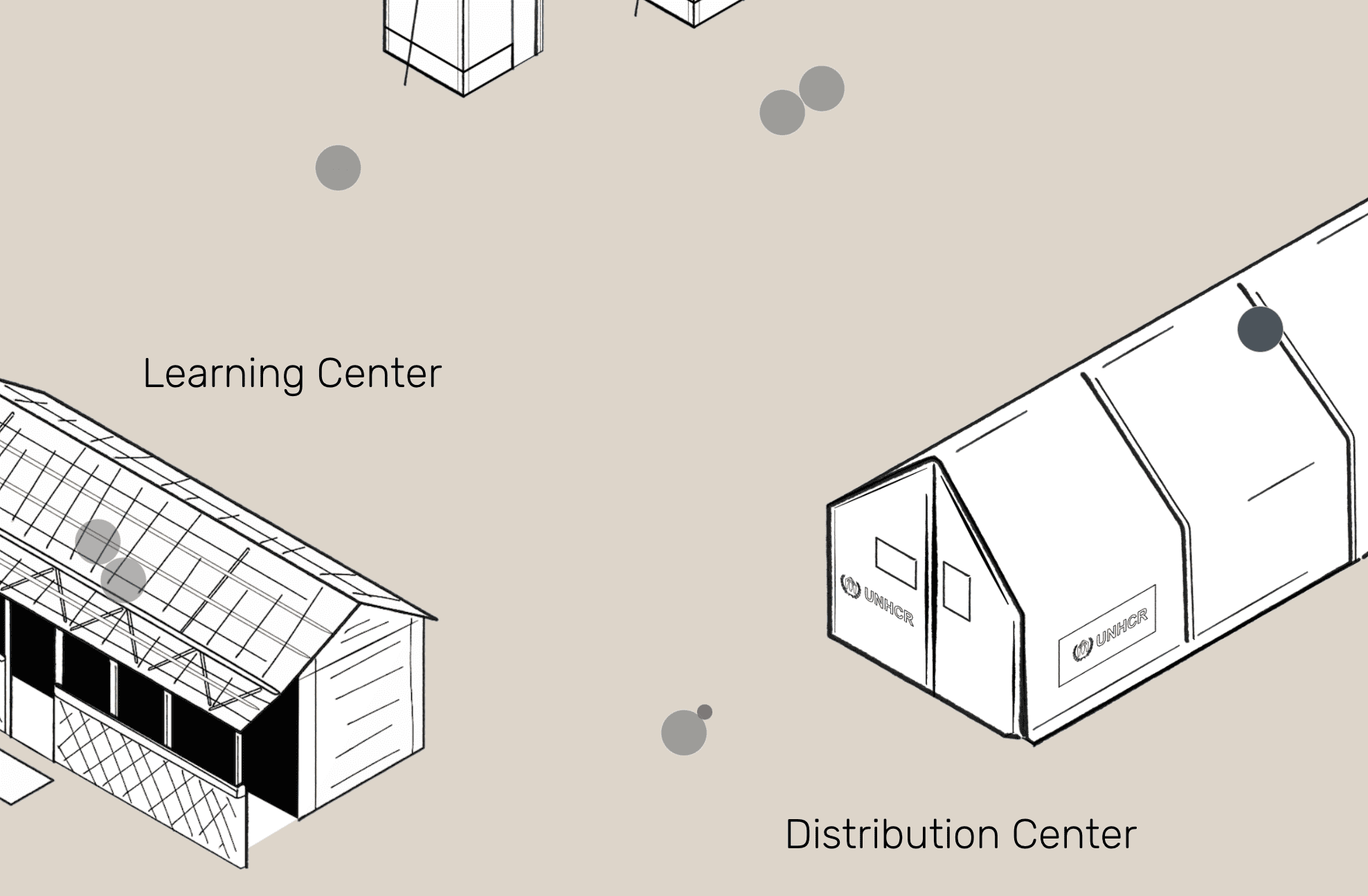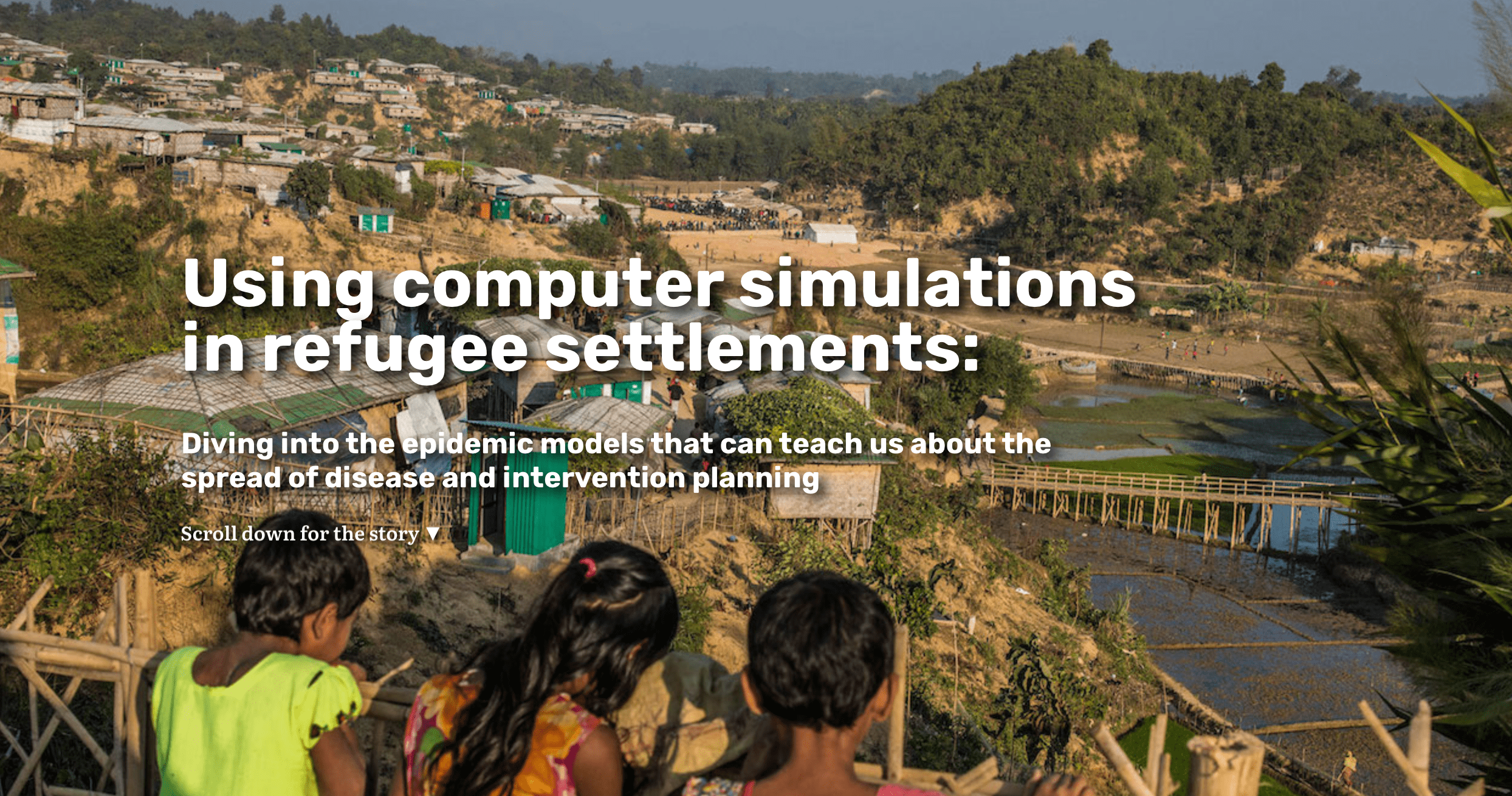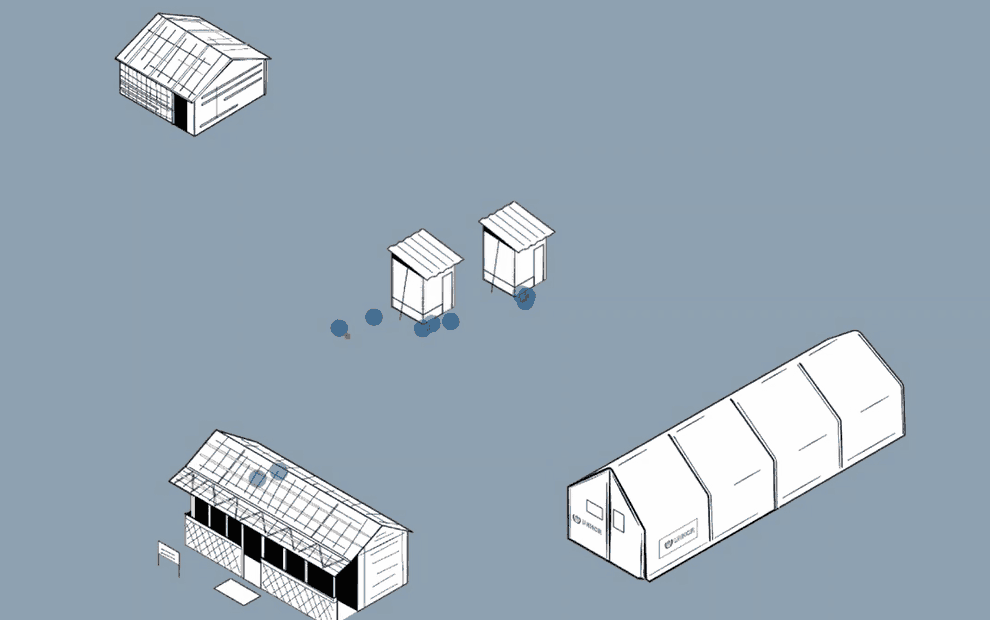Using computer simulations in refugee settlements was a scrollytelling piece I produced during my time at UN Global Pulse. It showcases research that models the spread of COVID-19 in refugee settlements in order to inform intervention planning on the ground, and explains how this computational model works.
It was my first experience with web interactives, so it was a great opportunity to learn and explore different tools. Here, I was responsible for storyboarding, illustrations, design, and development. I collaborated with colleagues at UN Global Pulse on the story and copyedit, and with colleagues at MIT-IBM Watson AI Lab on the code. Some of the tools we used included Vue.js, d3-force, and gsap.


The research itself was a collaboration between researchers at UN Global Pulse, UNHCR, WHO, Durham University and MIT-IBM Watson AI Lab, and more. The model was used by health professionals in the Cox’s Bazar settlement to test different intervention scenarios, like mask-wearing and opening or closing learning centers. More information can be found at this blog post and academic paper.



